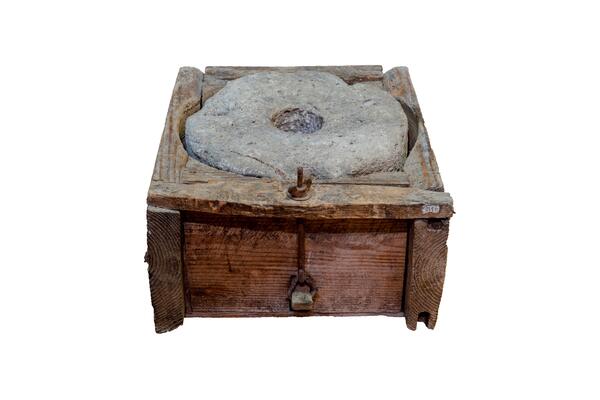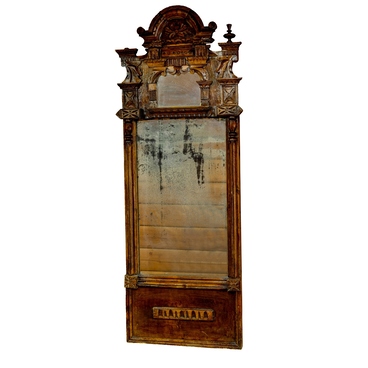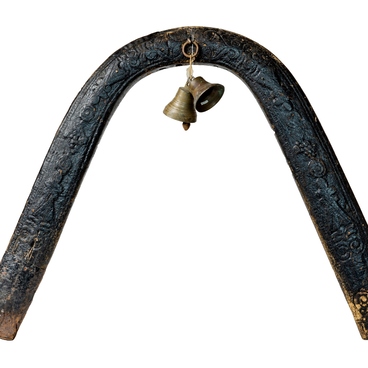The millstones from the collection of Nizhnevartovsk Museum of Local History are a kind of a simple hand mill, which was used to grind grains into flour. They are two round stones, which are placed into a square wooden box. There is a round through hole in the center of the upper millstone. It was used to put the grain inside. A special cavity for a handle is made on the edge of the disc.
The first millstones appeared in ancient times. Some historians believe that they were invented even earlier than wheels. Such stones were used to ground grains, seeds, nuts, and other plant foods. Millstones of the simplest hand mills were oval and differed in shape and weight. They were made of solid rocks that did not crumble and did not mix with finished flour. Sandstone was the best suited for this purpose. Even nowadays people call it a millstone.
The work surface of both details was covered with grooves and rough hatchings because they helped to grind grains better. The depth of such grooves was about 1.5–2 mm. The grains gradually moved from the center to the edges along them. Therefore, the finished flour fell into an appropriate container. If the millstones were used regularly, the cutting edges were rubbed off. That is why stones needed to be dressed periodically.
To start the grinding process, the lower millstone was fixed motionless. Then it was required to attach a wooden handle to the upper millstone. Grains were put into the central hole in small portions. After that, the upper stone was rotated to grind them. The process of grinding could not be regulated. That is why the flour was often coarsely ground, and the bread that was also coarse. However, in the old days, it was a usual kind of food for the villagers.
Almost all peasants used hand mills in Russia in the 18th — 19th centuries. These tools were usually stored in an outer entrance hall or a barn, and sometimes in a cellar. In winter, they were kept in a house, because stones could crack and crumble because of severe frost.
Wind and water mills appeared in the middle of the 19th century and replaced hand millstones, which were used to grind flour for baking. However, domestic hand mills were still used to grind feed for livestock and poultry.
The first millstones appeared in ancient times. Some historians believe that they were invented even earlier than wheels. Such stones were used to ground grains, seeds, nuts, and other plant foods. Millstones of the simplest hand mills were oval and differed in shape and weight. They were made of solid rocks that did not crumble and did not mix with finished flour. Sandstone was the best suited for this purpose. Even nowadays people call it a millstone.
The work surface of both details was covered with grooves and rough hatchings because they helped to grind grains better. The depth of such grooves was about 1.5–2 mm. The grains gradually moved from the center to the edges along them. Therefore, the finished flour fell into an appropriate container. If the millstones were used regularly, the cutting edges were rubbed off. That is why stones needed to be dressed periodically.
To start the grinding process, the lower millstone was fixed motionless. Then it was required to attach a wooden handle to the upper millstone. Grains were put into the central hole in small portions. After that, the upper stone was rotated to grind them. The process of grinding could not be regulated. That is why the flour was often coarsely ground, and the bread that was also coarse. However, in the old days, it was a usual kind of food for the villagers.
Almost all peasants used hand mills in Russia in the 18th — 19th centuries. These tools were usually stored in an outer entrance hall or a barn, and sometimes in a cellar. In winter, they were kept in a house, because stones could crack and crumble because of severe frost.
Wind and water mills appeared in the middle of the 19th century and replaced hand millstones, which were used to grind flour for baking. However, domestic hand mills were still used to grind feed for livestock and poultry.



